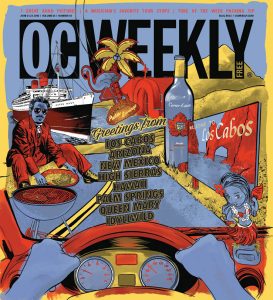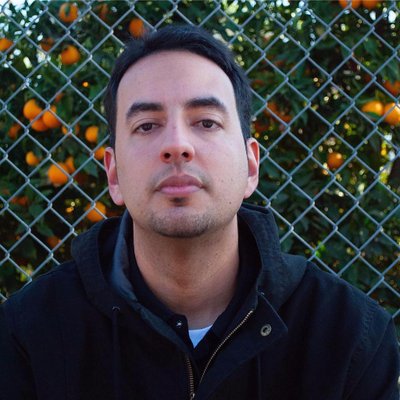
My last recollections visiting El Santuario de Chimayó in northern New Mexico (15 Santuario Dr., Chimayo, 505-351-9961; www.holychimayo.us) are as a young boy with asthma-ridden lungs. The centuries-old Roman Catholic Church, the holiest pilgrimage site of its kind in the United States, is best known for the lore of its curative dirt culled from the foothills of the Sangre de Cristo Mountains that surround it. Inside the church rests the pocito room, where a tiny pit holds the sacred soil. Crutches line up on the wall just outside, an impressionable testament to the healing power of faith.
Once inside the cramped quarters of el pocito, my mother scooped mounds of dirt and rubbed the earth on my chest to relieve me of my condition. I never returned after that, nor did my asthma attacks.
In April, just a few days after Easter, I came back to the santuario for the first time in decades. The 6-acre compound sees about 300,000 visitors annually, with 10 percent of them making the pilgrimage by foot during Holy Week. Some of the faithful walk from as far as Albuquerque, an hour-and-a-half trip by car.
The grounds proved to be much quieter after Catholics had already celebrated their belief in Christ’s resurrection. With only a few visitors on site, the nearby Santa Cruz River could be enjoyed in its full tranquility. The quietude extended to the numerous shrines around the compound. Rosaries are roped around the praying hands of a Virgin Mary statue at one stop. Votive candles, flowers and even more dangling rosaries decorate another.
Backed by scenic, lush foothills, the adobe Our Lord of Esquipulas chapel at the center of it all remains evocative of the early 1800s, when it was first built. That’s when accounts of a miraculous apparition brought the church into existence.
One legend has it that on Good Friday in 1810, Don Bernardo Abeyta saw a beam of light by the Santa Cruz River and followed it to discover a half-buried crucifix. When the Penitente Brotherhood member brought it to a priest at another parish, the crucifix vanished and resurfaced where Abeyta first found it. Getting the message, he helped to build a small chapel at the apparition site. Another tale holds that a priest from the Guatemalan city of Esquipulas helped to settle the area before dying. When the Santa Cruz River flooded, locals found his body and the crucifix. Whatever the case, word spread about the holy dirt and its healing powers, making the santuario a mecca of folk Catholicism.
Origins aside, the compound is undergoing changes these days in an attempt to attract new visitors and sustain itself. Rancho de Chimayó restaurant and the surrounding gift shops always gave visitors a little more to spend time on in the area, but the santuario itself is far from a day-long destination. And with Santa Fe only a half-hour drive away, it doesn’t really have to be.
But the revamping of the refuge continues. Behind the church stands a monument to New Mexico’s three cultures, with sculptures of an Anglo cowboy, a Mexican vaquero and a Native American. Off to the side of the sanctuary is a bronze statue dedicated to Father Casimiro Roca; the late Spaniard priest blessed the holy dirt for decades, becoming synonymous with the santuario in cementing his local legend. Across the way, El Rincón de Don Bernardo Abeyta Welcome Center, a museum and gift shop, now stands where it didn’t before.
For all that’s new, familiar sights proved most comforting. Below the church’s adobe arch, wooden doors swing open to a courtyard centered by a humble wooden crucifix. Inside the santuario, daily mass continues, open to all. After I took Eucharist, the priest ended the service by rejoicing “Happy Easter.” Parishioners and tourists alike slowly left through the church’s creaky, wooden doors.
Another exit off to the side led to the legendary pocito room.

Crutches still hung by the dozens, just as I remembered them. The walls outside the room are plastered with portraits of the infirmed who’ve been prayed for by loved ones making the pilgrimage. Through the entryway, the pocito appeared like a portal to the divine. I took a gardening trowel planted in the pit and scooped the soil into bags to take home. Soft in texture and beige in color, the holy dirt could easily be mistaken for Choco Milk powder, but church literature warns against eating or drinking it! Instead, the faithful are advised to rub the dirt on the parts of the body where healing is desired, followed by a short prayer.
After leaving the pocito room, I knelt on a wooden bench just outside it to pray, with my healing thoughts belonging to others. Whatever one believes about the blessed dirt and the hope it gives, visiting Chimayó brings truth to a universal spiritual principle. The splendor of the pocito room, Sangre de Cristo foothills and the Santa Cruz River makes evident the Earth is sacred.

Gabriel San Román is from Anacrime. He’s a journalist, subversive historian and the tallest Mexican in OC. He also once stood falsely accused of writing articles on Turkish politics in exchange for free food from DönerG’s!

